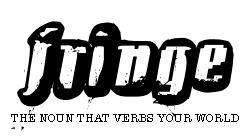 I recently read a book, that challenged me as a journalist, and as a human being. This graphic and intriguing account vividly documents the lives of four South African photojournalists who cover the conflict of the Apartheid years and other war correspondence during the 1990’s. The self-told account follows their lives as they encounter the horrific violence of the township feuds, and as they battle the ethical dilemma of when to shoot pictures and when to intervene. Greg Marinovich relives the tales of war, the killings, the shootings. Both he and another colleague were shot in a township battle. He survived but sadly Ken Oosterbroek was killed.
I recently read a book, that challenged me as a journalist, and as a human being. This graphic and intriguing account vividly documents the lives of four South African photojournalists who cover the conflict of the Apartheid years and other war correspondence during the 1990’s. The self-told account follows their lives as they encounter the horrific violence of the township feuds, and as they battle the ethical dilemma of when to shoot pictures and when to intervene. Greg Marinovich relives the tales of war, the killings, the shootings. Both he and another colleague were shot in a township battle. He survived but sadly Ken Oosterbroek was killed.Through the journey, you begin to get a taste for the depression that slowly invaded their minds, the nightmares that plagued their sleep, the emotional toll of their chosen career. As a photographer, I have begun to see pictures from a fresh perspective. I now understand how difficult it can be to get a good shot. I know what it is like to work with people, to get the right expression, the movement, to capture a moment, to stand steps away from the action. When I view pictures now, I think about the photographer, who they are, where they are, how they took this shot. I think about how that image must have looked, displayed just feet before them. The world takes on a certain distillation when viewed through the lens of a camera. It makes the photographer impartial, hidden, slightly removed from reality. But as I lower my camera, as I engage with my bare eyes, the creative mask is gone, and the harsh reality of life sits.
Kevin Carter, a member of 'the bang-bang club’ (as they were dubbed by the media) won the Pulitzer prize for his photograph of a Sudanese child face down in the dirt, a large vulture lurking in the background of the frame. Despite being a brilliant shot, the picture has raised global controversy as to what happened to the child after the picture was taken. Kevin has received much scrutiny as to why he didn’t help the child? Did he scare away the vulture? Why didn’t he carry the child to shelter? His initial account of the story was that he chased away the vulture, and that he was sure the child made it to safety, however he couldn’t be sure. Leaving himself wide open for scrutiny.

I remember studying this photograph in a university ‘ethics in journalism’ class. Kevin Carter's photograph was used as a bench mark, symbolising when telling the story overrides a human responsibility to help a starving child. The way the story was told to me, was that as the picture was being taken, the vulture attacked and killed the child, whilst the stunned photographer did nothing to stop it. I recall being disgusted that a person could come across a dying child, photograph them, and leave them alone, to be eaten alive by a preying vulture.
In reality, this is not what happened at all. In a war zone, in immense poverty, there are often many starving children, so many children hungry and desperate for attention. In this particular circumstance, a plane carrying aid had just landed (upon which the photographers had arrived), a large group of mothers had set down their children and babies to rush over and collect food and aid. This child was one of many, for all Kevin knew, its mother would shortly return for him.
There are many unknowns to this situation, it is clear to me after working in the field, that it is not as simple as I once imagined sitting safely behind my university desk in downtown Auckland city. A journalist goes into these situations to tell the story, to expose the truth. They simply cannot save every person they encounter, but by telling the story, they can enable others to assist. This particular picture that Kevin took shed light on the famine in Sudan that many were unaware of. As a result of the picture, millions of dollars of aid was donated to the Sudanese people.
Kevin eventually killed himself. He had seen too much.
The book goes on to explore the effects such a job has on the mental and emotional state of a human being, the cost at which these stories are told. It is an incredibly interesting and honest first-hand insight into South Africa’s dark history, and has given me a greater appreciation for the people of this place I currently call ‘home’.
What really strikes me, is that the tale of South African history is told from an individual who was actively involved, not in the fighting but in attempting to gain understanding. A man who was aware, yet still had questions and still found himself caught between the controversy. So much of what happened during those years is kept hidden, people simply didn’t know what was going on in their own backyards. My respect goes out to these men, who subjected themselves to significant danger, in a battle to uncover truth.
("The Bang-Bang Club" Written by Joao Silva and Greg Marinovich)


No comments:
Post a Comment